
My name is Mikhail, and I have been working in the animation and game development industry for over 8 years. I live in London and specialize in creating 2D/3D animations, providing feedback, and improving workflows for mobile games. Throughout my career, I have participated in numerous projects and collaborated with colleagues from different countries. However, I’ve noticed that many problems in the industry remain relevant year after year, despite technological advancements and the availability of knowledge.
In this article, I want to share my thoughts, examine common problems in 2D/3D character animation and UI, and share my experience in solving them. If you are interested in game development or animation, this article is for you.
IS IT ALIVE? PROBLEMS OF GAME ANIMATIONS
Before delving into the issues of animation in games, I want to highlight the difference between two key concepts: “animation” and “motion.”Although at first glance they may seem synonymous, there is a significant distinction between them. Motion is merely the foundation of animation, the physical movement of an object from point A to point B. It is an important component but does not encompass the essence of the process.
Animation is the art of bringing these movements to life, adding depth through the conveyance of characters’ moods and emotions. It involves the use of principles such as timing, weight, expressiveness, and many others, to make the movements of characters or objects meaningful and emotionally rich. In the context of games, animation plays a crucial role in enhancing the emotional impact of events and actions, as well as directing the player’s attention where necessary.In the example below, I want to visually demonstrate how the perception of these two concepts affects the attractiveness of the result. Please note that the character can be any inanimate object, even a UI button.

In the first case (the white circle), the object moves linearly, conveying no mood, and as a result, the goal of animation is not fulfilled. It is merely boring mechanical movement, nothing more. In the second case (the yellow circle), character, weight, and awareness of the object begin to emerge, and we sense a playful mood.
LIMITED ANIMATION vs. PRIMITIVE MOTIONS
An animation software should not do the animation for us. Although this may seem paradoxical, a software merely speeds up the work process by creating in-between frames. One common mistake is using basic program interpolation (splines), which kills the illusion of life in characters or objects, creating a sense of boredom.
Splines in animation are mathematical curves used to create smooth transitions between keyframes. Automatic splines allow the software to interpolate motion, providing smoother animation.
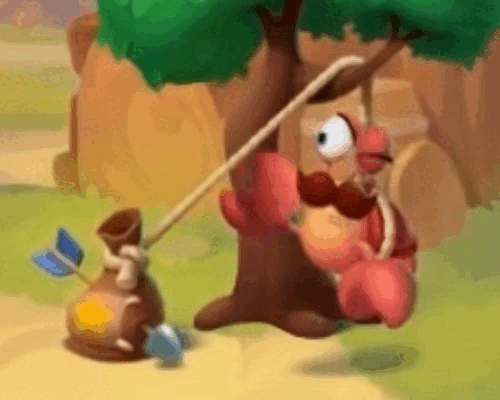
In animation, the idea is extremely important. If the character’s motivation is immediately clear to the viewer, then the effect of emotional engagement will work (the animation courtesy of Playrix)
It’s important to distinguish between limited animation, which adheres to animation principles under limited resources, and primitive linear movements that do not incorporate these principles (as in the example with the circles above). Limited animation involves creative choices to achieve high quality with limited means, whereas primitive movements often look unnatural and unattractive.
Limited animation is a technique where the minimum possible number of frames is used to save time and resources. This implies the reuse of some elements and less detail in movements.
Every movement in animation must be justified and stem from the character’s traits, emotional state, physical weight, and the laws of physics. Issues such as unnatural movement of characters caused by the automatic application of splines, or their collision with “invisible walls,” indicate the need for a deeper understanding and application of animation principles.
THE ART OF ANIMATION
The primary goal of an animator is not just to create the illusion of movement but to breathe life into it, making it part of a larger story. This requires not only technical skills but also creative vision. Understanding and applying animation principles is key to creating compelling and memorable animation that will make players return to the game again and again.
The main problem is that some colleagues in the industry perceive animation as something simple and unsophisticated. After all, one can always achieve quick results by setting a few keyframes, enabling frame interpolation, and the result immediately appears on the screen. But, as I’ve mentioned before, this only creates thoughtless movements, not animation. There’s neither idea nor emotion in it. It’s like a black-and-white sketch, a quick draft, but not a complete work.
For example, in high-budget games, the main approach to creating animations is motion capture. However, it’s not possible to just use data from actors and insert it into the game. The team of animators needs to do a lot of work adapting the motion capture to make the visuals brighter and more expressive. All animation principles, although based on real life, cannot exist outside animation software. A person cannot move only in arcs, make exclusively attractive movements, control spacing, and so on. In a game, we need to create a kind of theater, exaggerating our life, even for photorealistic genres.
Motion Capture is the process of recording the movements of real people or objects for their subsequent use in animation. The motion data is applied to 3D models of characters in video games or films, allowing for realistic animation.
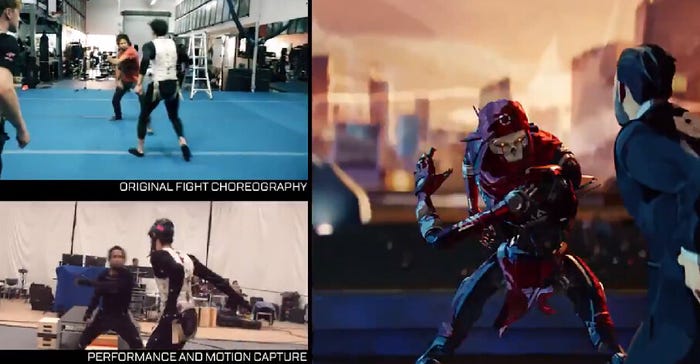
Apex Legends is one of the examples of games where motion capture was used
CREATIVE CONTROL
Relying solely on program-generated movements, an animator deprives themselves of control over the animation process. Players might not be able to explain why the animation looks bad, but they subconsciously feel it. This is especially noticeable when it comes to the poor execution of character performance. Unclear poses and mechanical, abrupt movements create a sense of repulsion, prompting the user to close the game and find something less irritating. In a highly competitive environment, this becomes a significant problem for developers, considering that users can now install triple-A games even on mobile devices, where the level of detail is much higher. Undoubtedly, a big budget is not a guarantee of success, but the visual quality of such products often surpasses that of competitors.
Coming from the world of animated series into game development, I immediately realized the extent of restrictions present in games. Due to the strict technical requirements of game engines, the freedom of creativity is greatly reduced. For example, when creating visual effects, it’s necessary to strictly adhere to particle count limits, which can restrain the realization of ambitious ideas.
In the realm of mobile development, Spine is often used for 2D animations. However, game projects typically have limitations on the number of bones and mesh points, questioning the ability to create complex animations. Beginner animators sometimes get carried away by adding an excessive number of elements, thinking that this will directly improve the animation. In reality, the quality and effectiveness of animated content are determined not by the number of elements but by the ability to use them wisely and appropriately to achieve the desired effect within the task at hand. Minimalism is the key to success!
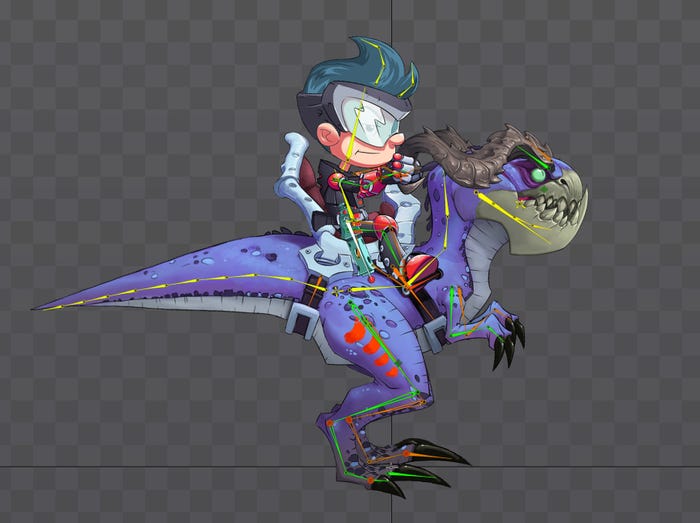
An example of a character from Spine 2D
Project organization must also be impeccable; otherwise, even minor errors can lead to serious problems. For instance, in games, it’s not uncommon to see characters’ bones turning inside out or characters suddenly falling through objects. Nevertheless, the entire work process can be fascinating. Sometimes, the art lies in how elegantly a situation is played out, turning disadvantages into advantages. All these restrictions do not hinder the creation of smooth and harmonious movements.
THE ROOT OF POOR QUALITY
One of the primary goals of animation is to convince the player of the realism of the character or situation. On mobile phones, the limited screen size does not allow for the same depth of involvement compared to a television or monitor screen. Therefore, the character’s emotions must be clear and expressive so that the player can instantly understand the mood of the situation, whether it’s the joy of victory or the disappointment of defeat.
We create smooth and energetic movements of game elements, but definitely not abrupt ones. It’s important that the character and visual effects enhance the emotional impact of the game situation, without confusing the user with their ambiguity. For example, when an important dramatic scene occurs. If the poses and movements in such a situation are abrupt, the player simply will not understand what happened.

Example of great animation: the drama of a scene is achieved through precise timing and clear poses (example from Ori and The Blind Forest)
Animation is an art that combines visual creativity, acting skills, and complex technical approaches. An animator must simultaneously consider dozens of aspects, investing their personal emotions into the work, as well as playing a role, even if it’s a living chair or a beetle. We have to control a multitude of bones and character controllers, all the while keeping an eye on the principles of animation. Therefore, I constantly repeat the importance of a comprehensive approach to the workflow.
Animation is often studied in a chaotic order, leading to systematic errors. People can work in the game industry for many years, but continue to make fundamental mistakes. I understand that this problem is widespread in many fields, but in the case of animation, it can lead to the need for hours of work to correct them due to a lack of fundamental knowledge.
MAKING MISTAKES IS NORMAL
The animator’s path is impossible without constant challenges and mistakes, which deserves great respect. Creating new animation is a new trial every time. However, in this article, I’m not expressing a subjective opinion. I cannot simply tell a colleague, “I don’t like your work. Redo it.”Instead, I analyze any animations frame by frame and demonstrate through specific examples how the animation can be improved. I explain in detail the principles of tracking body parts, showing exactly where sharp spacing (the distance between frames) occurs, at what moments there is a lack of body part lag, where the pose can be strengthened, balance added, and so on. Holding all this information in mind is extremely difficult, so making mistakes is normal. The main thing is not to be overconfident and to be open to help from others.
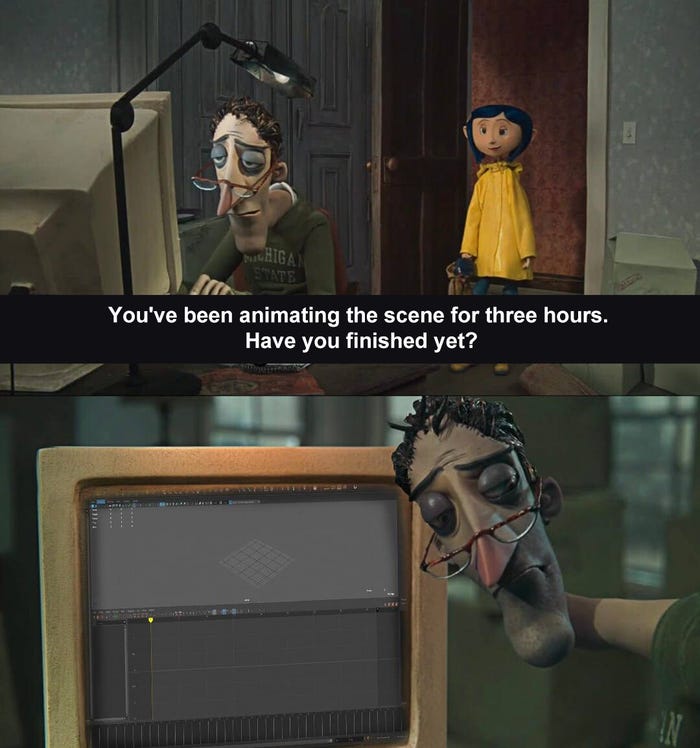
One of the most pleasant moments in game animation, when it’s easy to achieve a good and fast result, is the basic idle animation of a character. If you want to successfully complete a task and lift your spirits, animate idle! Adding offsets creates a pleasant effect of motion delay (overlapping), and the calm state does not raise questions. Although keyframe offsetting provides a pleasant visual effect, it is still not full-fledged animation.
What I most often observe is the application of the same principles to more active animations, such as lifting an object. As a result, the character either starts moving as if in zero gravity or, conversely, jerks like an old mechanical toy, violating all the laws of physics. And in my opinion, the root of evil lies precisely in the superficial approach to animation.
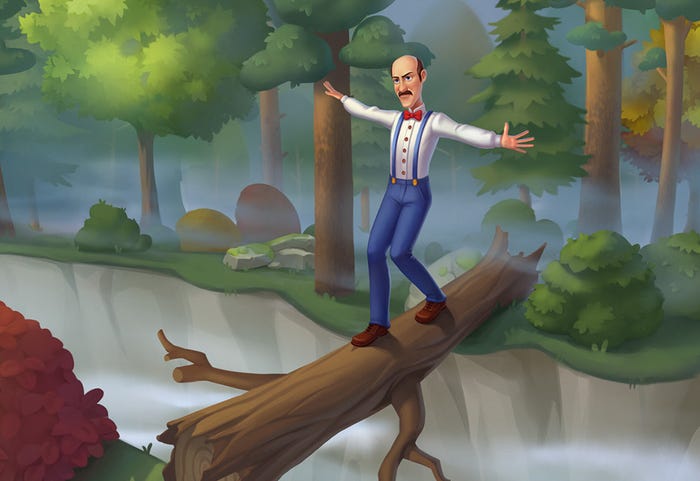
Animators often have to balance speed and quality of work (Image courtesy of Playrix)
MISTAKES BRING EXPERIENCE
I have made all the mentioned mistakes repeatedly, and it is only through experience that I can speak openly about them. Even now, I make mistakes because we cannot achieve perfection in everything. The most important thing is to constantly work on oneself, strive for self-improvement, continuously study new approaches, and openly accept feedback. I strongly recommend playing various game genres, watching cartoons, and maintaining communication with industry colleagues. We cannot afford to ignore market trends and new technologies.



